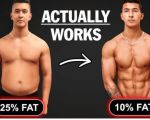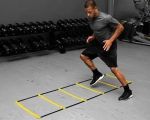
Understanding Fitness Plateaus: The Struggle We All Face
We've all been there: you’re working hard at the gym, following your routine, eating right, and still, your progress seems to come to a screeching halt. No matter how much effort you put in, the scale won't budge, your strength doesn’t increase, and that once achievable goal seems further away. This is the dreaded fitness plateau, and it can be frustrating. But the good news is, you're not alone—and it’s possible to break through.
As someone who’s been through multiple plateaus in my fitness journey, I can tell you from experience that they’re inevitable. Whether you're a beginner or an experienced gym-goer, at some point, your body will adapt to the exercise routine you've been following, and the progress will slow down. The key to overcoming plateaus lies in understanding what they are and how to work through them.
What is a Fitness Plateau?
A fitness plateau is when your progress stalls despite continuing to follow the same workout routine. It’s like hitting a wall where your body no longer responds to your efforts the way it once did. This is a natural part of the fitness process and can happen in any area: strength training, weight loss, muscle building, or endurance. It’s important to realize that plateaus are not a sign of failure. They are simply a signal that your body has adapted to the stress you’ve been putting it under, and it's time to switch things up.
Why Do Fitness Plateaus Happen?
Plateaus occur because your body becomes more efficient at performing the same exercises. This adaptation process, known as "homeostasis," makes your muscles, cardiovascular system, and metabolism more efficient. While this sounds like a good thing, it can slow down progress. When your body becomes used to the same routine, you stop seeing improvements. The body becomes less challenged and stops pushing itself to grow or adapt.
Another factor is that progress itself can take time. Sometimes, it's easy to think that just because you're not seeing immediate results, you’ve hit a plateau. In truth, plateaus often happen after an initial period of rapid progress, and they can be mistaken for a complete stall in progress.
How to Overcome a Fitness Plateau
Breaking through a fitness plateau is all about introducing variety and challenging your body in new ways. Here are some strategies that worked for me and many others in overcoming plateaus:
1. Change Up Your Workout Routine
One of the most effective ways to break a plateau is to change the intensity, duration, or type of exercise you’re doing. If you’ve been focusing on cardio, try incorporating strength training or high-intensity interval training (HIIT). If you’ve been lifting the same weights for months, it’s time to increase the load, or switch up the type of resistance training you’re doing.
Our bodies adapt quickly to familiar exercises. By switching things up, you force your muscles and metabolism to work harder. For example, if you’ve been doing squats for a while, try lunges or deadlifts. If you’ve been running, try cycling or swimming. This will challenge your body in new ways, sparking new growth and progress.
2. Prioritize Recovery
Recovery is often the most overlooked aspect of fitness. When I was stuck in a plateau, I was too focused on working harder and longer, but not on allowing my body to recover. Rest is when muscles repair and grow, so if you’re not prioritizing sleep or taking rest days, you’re working against yourself.
Make sure you're getting enough sleep, stretching regularly, and taking days off when needed. Overtraining can cause burnout and hinder progress, so don't feel guilty about taking it easy sometimes.
3. Set New Goals
When I was feeling stuck, I realized my goals were no longer challenging me. Instead of focusing on the same goals, try setting new, more ambitious ones. This can reignite your motivation and give you a new sense of purpose in your fitness journey.
For example, aim for a new personal best in deadlifts or push yourself to run a faster mile time. Setting specific, measurable, and time-bound goals will keep you focused and provide clear milestones to track your progress.
4. Experiment with Nutrition
Nutrition plays a huge role in overcoming a plateau. If you're not fueling your body properly, it won’t have the energy to push through tough workouts. I found that adjusting my macronutrient balance—such as increasing protein intake or trying a carb-cycling approach—helped break my plateau.
Consider consulting with a nutritionist to optimize your diet for muscle recovery, fat loss, or strength gains. Additionally, ensure you're drinking enough water to stay hydrated throughout the day.
5. Track Your Progress
Sometimes, you may feel like you’re stuck, but your body may be making progress in ways that aren’t immediately visible. Tracking your workouts, measurements, and nutrition can help you see incremental progress that may be overlooked on a day-to-day basis.
Use a journal or an app to log your workouts and meals. You may be surprised by the small victories, such as lifting more weight or running longer distances, that are happening behind the scenes.
Real-Life Story: Overcoming My Own Plateau
I'll be honest: I've experienced my fair share of fitness plateaus, and each time I’ve learned something new. The most significant plateau I faced occurred after a few months of consistently lifting weights. I had gained some muscle, lost fat, and was feeling great, but then, everything stopped. My strength gains slowed down, and I couldn’t push past certain weights. I thought I was doing something wrong.
It wasn’t until I changed my approach that things started to move again. I added HIIT sessions into my routine, which not only shocked my muscles but also improved my cardiovascular health. I also gave myself more time to recover—something I hadn’t been doing. My energy levels increased, and soon enough, I was lifting heavier weights again. The key to overcoming my plateau was a mix of patience, persistence, and variety.
Conclusion: Stay Consistent and Trust the Process
Fitness plateaus are frustrating, but they’re a part of the journey. The most important thing to remember is that they’re temporary. With the right mindset and approach, you can break through and continue to progress toward your goals. Change your routine, prioritize recovery, set new goals, adjust your nutrition, and track your progress. Trust the process, stay consistent, and you'll emerge stronger than before.








